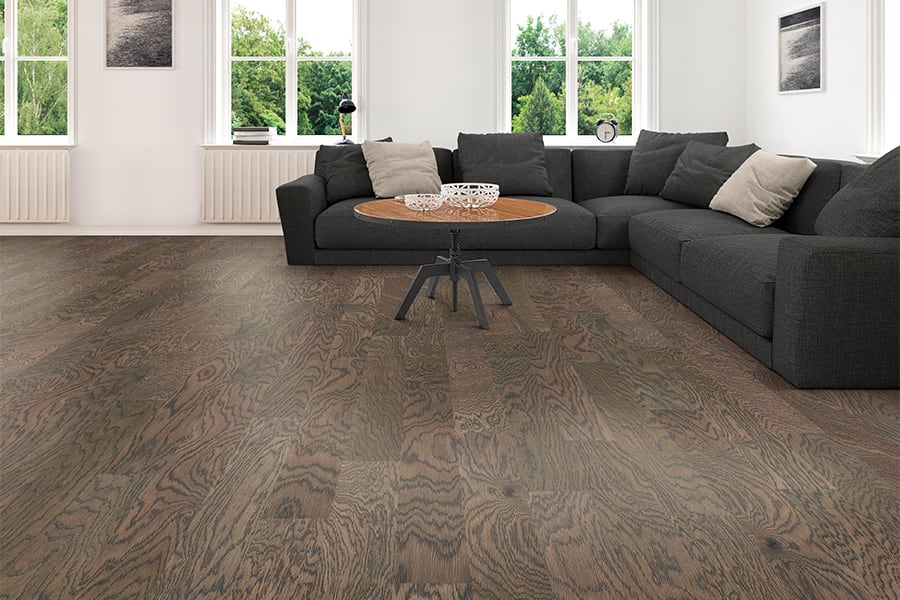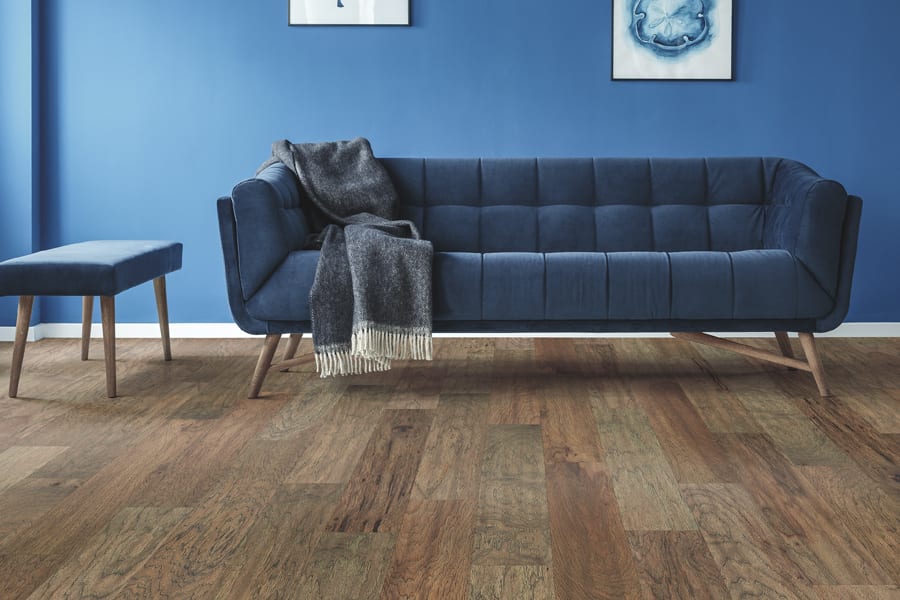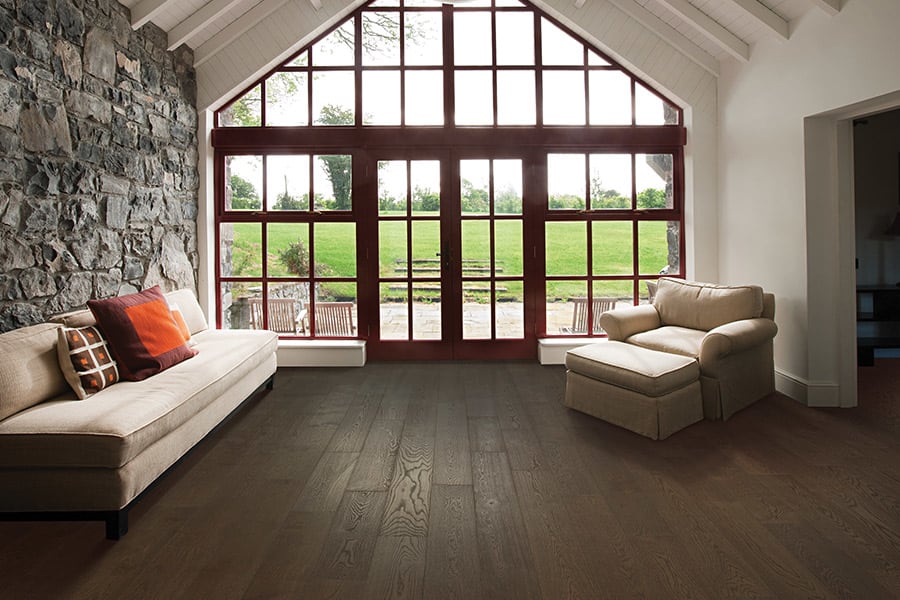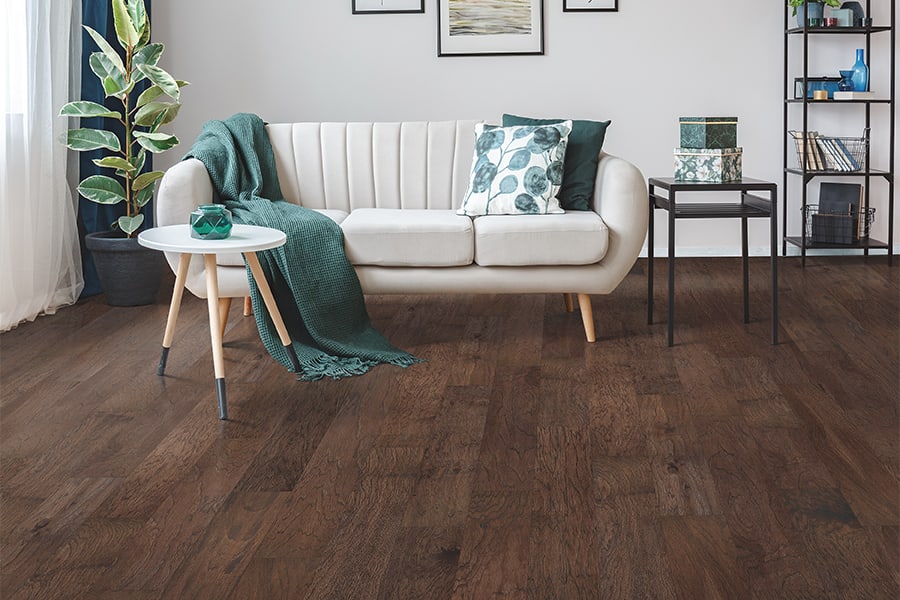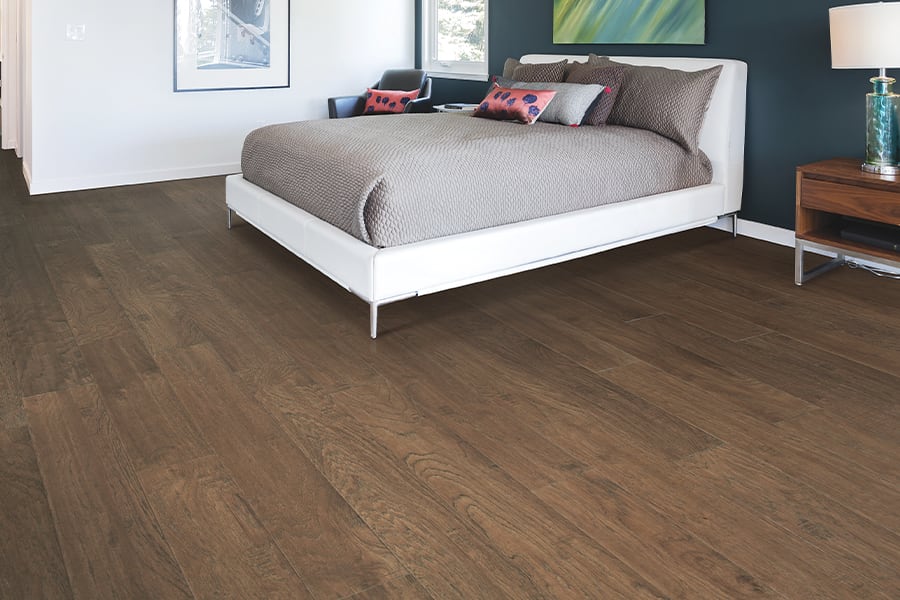What are the two types of hardwood?
There are two versions.
Solid hardwood, which everyone knows, can be damaged by excess water and moisture.
Engineered is the other version. It is now taking a major share of the wood flooring industry. The only difference is the construction, which makes it more stable and better able to handle water and appeals to those who want aesthetics but also have a more practical side.
Savon Flooring has been servicing San Diego County for over 13 years. We pride ourselves that we’re often referred to as a "hidden gem," carrying some of the top names in the industry, from Mohawk to Marazzi and Cambria Quartz to US Floors and more.
We especially love hardwood flooring; after all, who doesn't love wood floors? They add a rich, warm, elegance to your home and, whether solid or engineered, they'll all value to your property.
While some may be a little surprised at the initial cost, they are quite cost-effective because they last for years (sometimes up to 100), never go out of style and work with any decor.
Come in to see our hardwood flooring store within our showroom in San Diego County. We're located right next to the Mohnackey Animal Hospital on CA-78.
Solid hardwood, which everyone knows, can be damaged by excess water and moisture.
Engineered is the other version. It is now taking a major share of the wood flooring industry. The only difference is the construction, which makes it more stable and better able to handle water and appeals to those who want aesthetics but also have a more practical side.
Savon Flooring has been servicing San Diego County for over 13 years. We pride ourselves that we’re often referred to as a "hidden gem," carrying some of the top names in the industry, from Mohawk to Marazzi and Cambria Quartz to US Floors and more.
We especially love hardwood flooring; after all, who doesn't love wood floors? They add a rich, warm, elegance to your home and, whether solid or engineered, they'll all value to your property.
While some may be a little surprised at the initial cost, they are quite cost-effective because they last for years (sometimes up to 100), never go out of style and work with any decor.
Come in to see our hardwood flooring store within our showroom in San Diego County. We're located right next to the Mohnackey Animal Hospital on CA-78.
The construction difference
Solid hardwood is, as it sounds, wood through a plank. The fibers lie in one direction, parallel.
Engineered hardwood consists of one solid slice at the top with, underneath, with at least three layers of wood and other materials. (Note: The more layers, the better, because thickness matters here. It affects both durability and the number of times it can be sanded and refinished.)
Each layer is placed in a crosswise position, which makes the fibers crisscross.
While both have similarities, such as the ability to be sanded and refinishing and value-adding, both do have differences in functionality.
Since engineered can handle water and moisture better, there is more versatility as to the area in which it can be installed; for example, it shouldn't be installed in a full bathroom where there’s heavy moisture, but installation in the half-bath is fine.
It also doesn't shrink and expand to adjust to the weather, so no acclimation is needed.
Engineered hardwood consists of one solid slice at the top with, underneath, with at least three layers of wood and other materials. (Note: The more layers, the better, because thickness matters here. It affects both durability and the number of times it can be sanded and refinished.)
Each layer is placed in a crosswise position, which makes the fibers crisscross.
While both have similarities, such as the ability to be sanded and refinishing and value-adding, both do have differences in functionality.
Since engineered can handle water and moisture better, there is more versatility as to the area in which it can be installed; for example, it shouldn't be installed in a full bathroom where there’s heavy moisture, but installation in the half-bath is fine.
It also doesn't shrink and expand to adjust to the weather, so no acclimation is needed.
Request an estimate
Other differences
- Engineered is more affordable.
- Engineered has more installation method possibilities more installation method possibilities. This one can be installed over concrete, as long as it’s dry and clean. Methods are glue, staple, nail and click. While it’s generally a good idea to avoid using any organic material in the kitchen, engineered could work if the proper precautions are taken.
